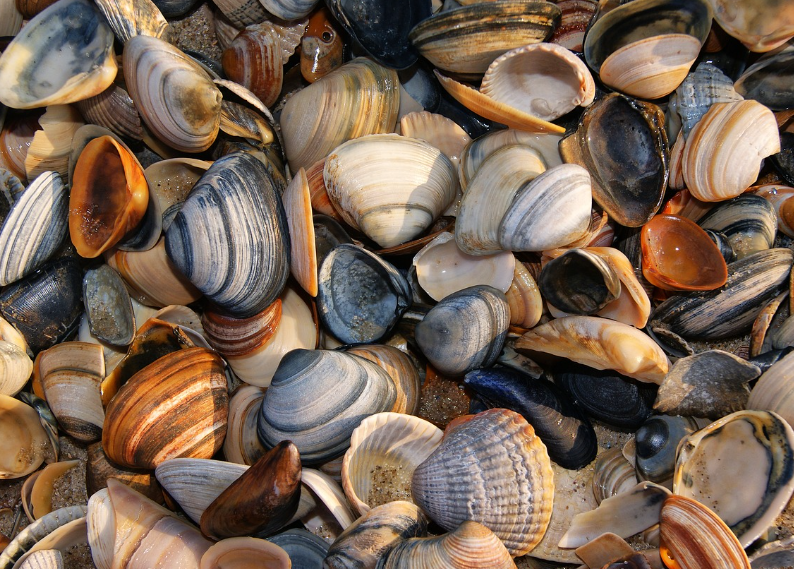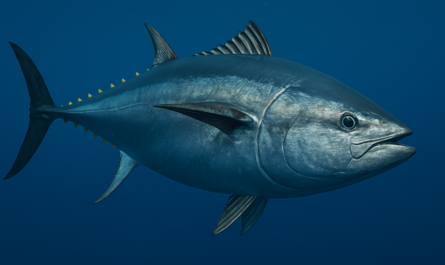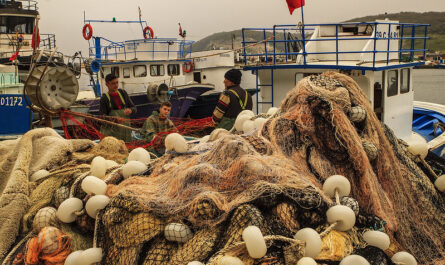The Atlantic Ocean, with its vast and diverse marine ecosystems, has long been a source of bountiful seafood for coastal communities around the world. In recent years, however, there has been a noticeable shift toward more sustainable practices to meet increasing demand while preserving environmental health. Among these emerging practices, shellfish farming stands out as a promising, eco-friendly alternative to traditional wild-capture fisheries. This article explores the rise of shellfish aquaculture in the Atlantic, its environmental and economic benefits, challenges that lie ahead, and its potential role in securing a sustainable future for seafood.
1. Introduction to Shellfish Farming
Shellfish farming, also known as bivalve aquaculture, involves cultivating species such as oysters, mussels, clams, and scallops in controlled marine environments. Unlike many forms of animal farming, shellfish aquaculture is naturally sustainable. These filter feeders require no external feed and rely on the nutrients present in the water to grow, making them less resource-intensive compared to finfish farming.
In the Atlantic region, shellfish farms are rapidly emerging along both the European and North American coasts. As coastal populations grow and concerns over overfishing and environmental degradation intensify, the shift toward sustainable seafood production has become more urgent than ever. Shellfish farming not only offers a sustainable source of high-quality protein but also provides numerous ecological benefits.
2. Environmental Benefits of Shellfish Farming
Natural Water Filtration
One of the most significant advantages of shellfish farming is its natural water filtration capability. Shellfish are known for filtering large volumes of water as they feed, removing particulates, excess nutrients, and even pollutants. This process can help improve water quality, support the health of nearby ecosystems, and even mitigate the impacts of eutrophication—a process where water bodies become overly enriched with minerals and nutrients, leading to excessive algae growth and oxygen depletion.
“Shellfish, by their very nature, contribute to healthier marine environments. Their filtration activity can improve water clarity and quality, benefiting a wide range of marine life.” cite
Carbon Sequestration and Habitat Creation
Shellfish farms contribute to carbon sequestration indirectly by creating habitats that support various marine species. The structures used in shellfish aquaculture can serve as artificial reefs, providing shelter and breeding grounds for fish and invertebrates. These habitats not only boost local biodiversity but also enhance the resilience of marine ecosystems against climate change.
Furthermore, the calcification process in shellfish shell formation sequesters carbon in the form of calcium carbonate, which adds to the long-term storage of carbon and contributes to climate mitigation efforts.
Minimal Environmental Footprint
Compared to other forms of aquaculture, shellfish farming typically has a minimal environmental footprint. It requires no antibiotics, hormones, or chemical feeds. Since shellfish naturally feed on phytoplankton and organic matter in the water, their cultivation involves less energy and fewer resources. This low-impact nature makes shellfish farming an attractive option for environmentally conscious seafood production.
3. Economic and Social Impacts
Boosting Local Economies
The growth of shellfish farming in the Atlantic has significant positive economic implications for coastal communities. These operations create job opportunities not only in the farming itself but also in ancillary industries such as processing, distribution, and tourism. Small-scale, community-run shellfish farms often become key contributors to local economies, providing a stable source of income and supporting regional development.
Promoting Sustainable Seafood Markets
As consumers become more environmentally aware, the demand for sustainable and ethically produced food increases. Shellfish, as a low-impact seafood option, meets this growing consumer demand. By promoting sustainable practices, shellfish farming can open up new market opportunities both domestically and internationally, positioning Atlantic seafood as a premium, eco-friendly product.
Social Benefits and Community Engagement
Beyond economic gains, shellfish farming can also foster social benefits by bringing communities together. Many coastal communities have long-standing traditions related to fishing and seafood processing. By integrating modern shellfish farming practices with these traditions, communities can preserve their cultural heritage while adapting to contemporary environmental and economic challenges. Educational programs and community events centered on sustainable aquaculture also promote environmental awareness and stewardship among local residents.
4. Technological Innovations Driving the Future
Advanced Monitoring and Data Collection
Modern shellfish farming in the Atlantic is increasingly benefiting from technological advancements. Remote sensing, underwater drones, and automated monitoring systems allow farmers to closely monitor water quality, temperature, and other environmental factors in real time. These technologies help ensure optimal growth conditions for shellfish and allow for timely interventions if any issues arise.
Sustainable Farming Practices
Innovative practices such as integrated multi-trophic aquaculture (IMTA) are also being explored in the Atlantic. IMTA involves farming different species together in a way that mimics natural ecosystems. For instance, alongside shellfish, seaweeds and finfish may be cultivated in the same area. Seaweeds absorb excess nutrients and help regulate water quality, while finfish can benefit from the shelter provided by shellfish and seaweed structures. This holistic approach maximizes resource efficiency, reduces waste, and further minimizes environmental impacts.
Genetic Improvements and Breeding Programs
Researchers are also working on selective breeding programs to develop shellfish strains that are more resilient to changing environmental conditions. As ocean temperatures rise and water quality fluctuates due to climate change, these genetic improvements can help ensure the long-term viability of shellfish farms. By developing strains that are both fast-growing and disease-resistant, scientists are paving the way for more reliable and productive shellfish aquaculture.
5. Challenges and Considerations
Environmental Risks and Management
Despite its many benefits, shellfish farming is not without its challenges. One key concern is the potential for localized environmental impacts if farms are not managed responsibly. Overcrowding in shellfish farms, for example, can lead to localized depletion of phytoplankton, which may affect the broader marine ecosystem. To mitigate such risks, strict management practices and regulatory frameworks must be in place.
Climate Change and Ocean Conditions
Climate change presents a significant challenge to shellfish farming. As ocean temperatures rise and acidity increases, the very conditions that support shellfish growth may become less favorable. Increased frequency of extreme weather events could also disrupt farming operations, leading to losses. Adaptation strategies—such as selecting resilient shellfish strains and implementing advanced monitoring systems—are essential to address these challenges and ensure the sustainability of shellfish aquaculture in the long term.
Economic and Regulatory Hurdles
Establishing and maintaining shellfish farms requires significant investment in infrastructure, technology, and labor. In regions where regulatory frameworks are still evolving, navigating the legal and bureaucratic landscape can be challenging. Support from government agencies, investment in research and development, and collaboration between industry stakeholders are crucial to overcome these hurdles and foster a thriving shellfish farming sector.
6. The Future of Shellfish Farming in the Atlantic
Expanding Market Opportunities
The future of shellfish farming in the Atlantic looks promising as global demand for sustainable seafood continues to grow. Consumers are increasingly willing to pay a premium for products that are environmentally friendly and ethically produced. Atlantic shellfish, with their minimal environmental footprint and high nutritional value, are well-positioned to capture a significant share of this expanding market.
Policy and International Collaboration
For shellfish farming to reach its full potential, robust policy support and international collaboration are essential. Governments in the Atlantic region, along with international organizations, need to work together to establish guidelines that ensure sustainable practices, protect marine ecosystems, and promote research and innovation. Such collaborations can help standardize practices across borders, making the industry more efficient and competitive on a global scale.
Innovation as a Key Driver
Technological innovation will continue to drive the evolution of shellfish farming. As new technologies emerge and existing systems become more refined, the industry will be able to address many of the challenges currently facing it. Innovations in data analytics, genetic research, and sustainable farming practices will help maximize yields, reduce environmental impacts, and ensure that shellfish farming remains a viable and profitable enterprise in the face of climate change and other global challenges.
Integrating Local and Traditional Knowledge
Many coastal communities have centuries of experience in fishing and aquaculture. Integrating this traditional knowledge with modern technology can lead to innovative and sustainable solutions for shellfish farming. Community-led initiatives that blend old-world wisdom with new-world practices not only preserve cultural heritage but also provide practical insights into sustainable resource management. This integration is key to creating resilient and adaptable farming systems that can thrive in a changing world.
7. Case Studies and Success Stories
European Pioneers in Shellfish Farming
In Europe, particularly along the Atlantic coast, several pioneering projects have set the benchmark for sustainable shellfish farming. Countries like France, Spain, and the United Kingdom have developed advanced aquaculture systems that combine traditional practices with modern technology. These systems emphasize environmental sustainability, economic viability, and social responsibility. For instance, France’s extensive oyster farming operations have long been celebrated for their high-quality products and sustainable practices, making French oysters a sought-after delicacy worldwide.
North American Innovations
North America is also witnessing significant advancements in shellfish farming. Along the eastern seaboard of the United States and the Canadian Atlantic provinces, innovative practices are being implemented to boost production while minimizing environmental impact. Researchers and industry stakeholders are collaborating to improve farm design, enhance water quality monitoring, and develop resilient shellfish strains. These efforts are positioning North American shellfish as a sustainable alternative to overfished wild stocks, contributing to food security and economic stability in coastal communities.
Success in Sustainable Aquaculture
Globally, successful shellfish farming initiatives serve as powerful examples of how sustainable practices can transform the seafood industry. These projects not only provide high-quality products but also create jobs, support local economies, and protect marine ecosystems. By sharing these success stories, industry leaders hope to inspire similar initiatives in other parts of the world, ultimately leading to a more sustainable future for seafood production.
8. Conclusion: A Promising Horizon for Sustainable Seafood
The rise of shellfish farming in the Atlantic represents a beacon of hope for the future of sustainable seafood. By harnessing the natural abilities of shellfish to filter and purify water, reduce environmental impacts, and support marine ecosystems, this form of aquaculture offers a viable solution to some of the most pressing challenges in global food production. As consumer demand for ethically produced and environmentally friendly seafood grows, shellfish farming stands out as an innovative and sustainable practice that benefits both people and the planet.
From its numerous environmental benefits to its positive economic and social impacts, shellfish aquaculture has the potential to reshape how we source seafood. While challenges remain—such as climate change, regulatory hurdles, and the need for technological innovation—the progress made so far is encouraging. With ongoing research, international collaboration, and community-led initiatives, the Atlantic region could well become a global leader in sustainable seafood production.
For coastal communities, shellfish farming not only offers a path to economic resilience but also a way to preserve and enhance their natural heritage. For consumers, it promises a future where seafood is both delicious and responsibly produced. And for the environment, it offers a method of production that works in harmony with nature rather than against it.
In the coming years, as the world continues to grapple with overfishing, climate change, and environmental degradation, sustainable practices like shellfish farming will be crucial in ensuring that we have a steady, eco-friendly supply of seafood. The Atlantic, with its rich marine biodiversity and favorable conditions, is uniquely positioned to lead this transformation.
The future of seafood is not just about catching what’s abundant in the ocean—it’s about cultivating it in ways that honor nature’s balance. Shellfish farming exemplifies this philosophy, turning natural processes into a sustainable method of production that could safeguard our oceans and provide healthy, sustainable food for generations to come.
As we look ahead, the rise of shellfish farming in the Atlantic serves as a reminder that sustainable solutions are within reach. By investing in research, supporting innovative practices, and embracing environmental stewardship, we can create a future where seafood production is both profitable and ecologically responsible. It’s a promising horizon—one where the hidden mountains of the Atlantic not only yield rich marine resources but also foster a sustainable future for seafood.



